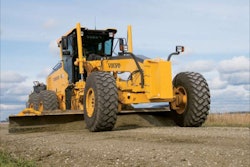Autumn Reading
By Kirk Landers, Editor Emeritus
 [email protected]
[email protected]Early September brought a quick end to the hazy, escapist days of summer.
First came an Innovation NewsBriefs newsletter saying that sentiment is growing in Washington, DC to keep the federal highway funding where it’s at and reduce its scope to just the Interstate Highway System.
Next came a breathlessly happy news item from the U.S. Department of Transportation reporting that traffic deaths fell nearly 10 percent in 2009, to 33,808, the lowest number since 1950. Of course, you expect deaths and accidents to decline in a recession because people drive less, but that didn’t happen this time. The DOT says total miles driven were up compared to 2008, and that the improved safety record stemmed from government programs to increase seat belt usage, improve auto crash ability features, and crackdowns on drunk driving.
And moments later I read a news release about a new AASHTO (American Association of State Highway and Transportation Officials) report that finds greater investment is needed in rural roads to serve growing agricultural and energy output, emerging cities that are not connected to the interstate system, and rising congestion in popular tourist destinations.
Forgive me. I confess to having a curmudgeonly episode at the end of this reading cycle, and the episode continues to this moment. Allow me to vent…
Downsizing the federal road program may seem absolutely brilliant to anti-tax libertarians and conservatives, but it is just cowardly. Instead of paying for the system we need, we are settling for the system we’re willing to pay for. One of the nasty horrors of the pre-recession years in America was driving 25 miles in 25 minutes on an interstate, only to sit in a queue at your off ramp waiting for traffic to inch forward on the local road you need to take. That is the ultimate reality of an interstate-only federal program. It can only increase system-wide problems with congestion, poor pavement quality and inadequate bridges.
The Department of Transportation report on traffic deaths is good news, but it’s bad news, too. With unemployment spiking, gasoline prices hovering at three bucks a gallon, and our politicians weeping publically about the inability of our beleaguered citizenry to pay an extra dime a gallon for gas, we Americans drove more than we did the year before. More than when gas was two bucks a gallon. More than when it was one dollar a gallon.
As for the AASHTO report on rural highway needs, let us have no doubt that it is accurate, but you have to marvel at the irony when most of the transportation people quoted in the release represent states in which tax increases of the sort needed to address rural highway problems are considered an assault on public decency. It may well be that this group, more than any other constituency in America, has created more congressional representatives and senators who are completely and totally dedicated to opposing any tax increase for any reason.
What does it all mean? Well, nothing good for roads is likely to happen before the November elections, and the chances of meaningful action in the next Congress aren’t good either. On the other hand, if highway industry and user groups give up, failure becomes a self-fulfilling prophecy. So be glad driving is safer in America, make it a point to respond to people advocating a downsized highway program, and get the AASHTO report on rural needs to as many influential people as you can.v












